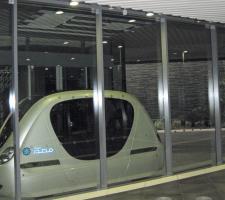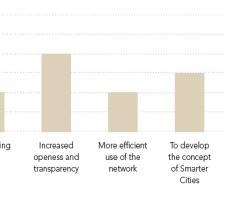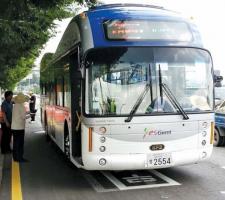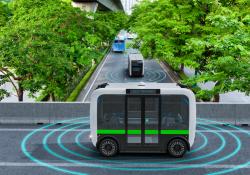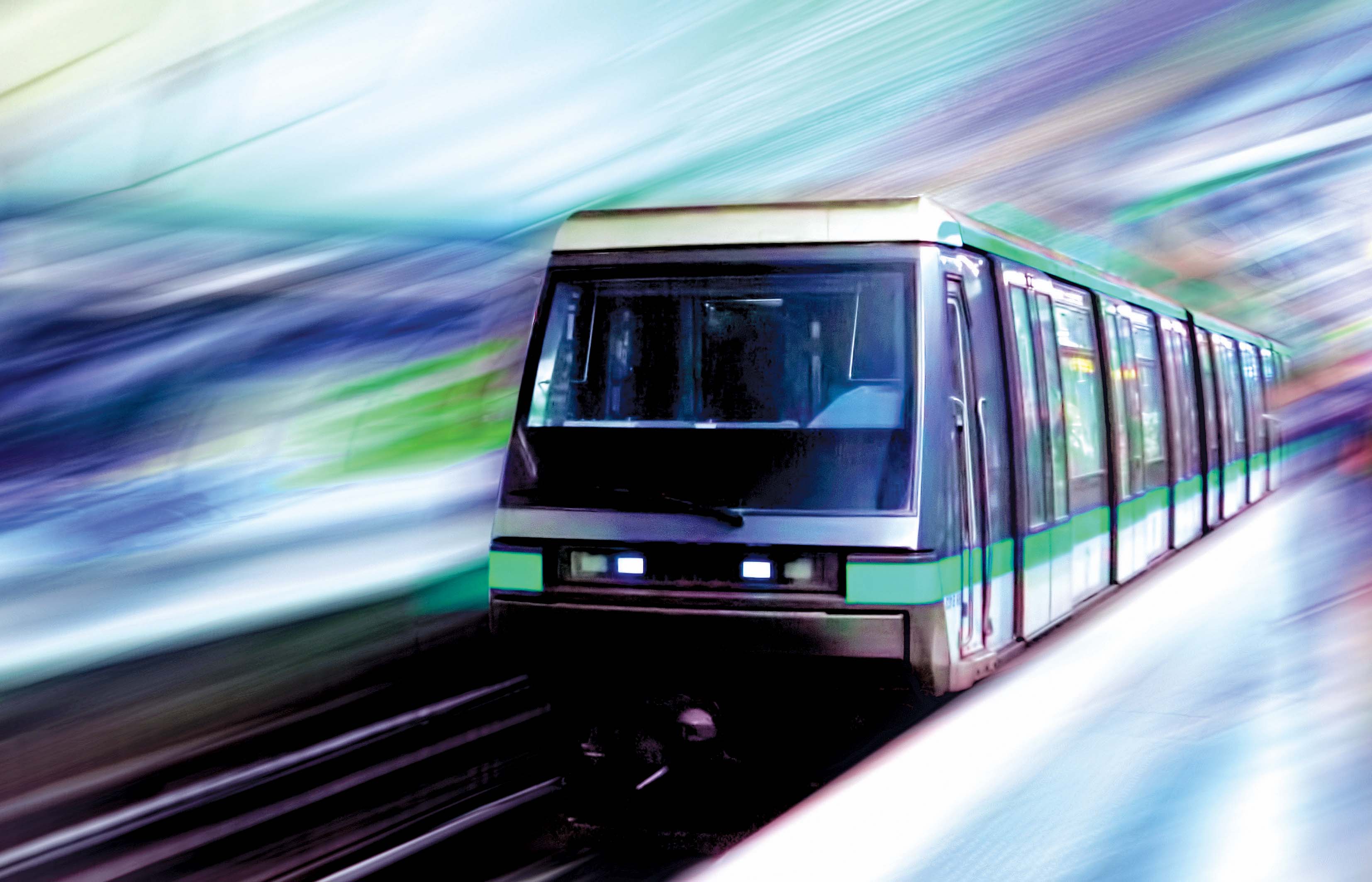
David Crawford looks at new ways forward for public transport.
By 2025, nearly 60% of the world’s population will be living in towns and cities, increasing their extent and density, and the journeys that people make within and between them. In response, the
“Success in 2025,” a spokesperson told ITS International, “will save 170 million tonnes of oil equivalent and 550 million tonnes of CO2 equivalent on a ‘business as usual’ comparison.” But a 2014 Future of Urban Mobility report (see March/April 2014) by global strategy consultants Arthur D Little warns that ‘current trends indicate that more people will choose to use private motorised transport’.
It finds most of 84 major cities ‘badly equipped’ to meet the urban mobility challenge; the best was Hong Kong, followed closely by Stockholm and Amsterdam – though all with ‘potential for improvement’. Of the 16 below-par cities, four are in the US - Atlanta, Dallas, Houston and Miami – which the report says is ‘fresh evidence that Americans’ addiction to cheap fuel is impeding the development of sustainable mobility models.’
There is widespread acknowledgement that the convenience of having a private vehicle to hand, and the incentive to make use of its fixed costs of ownership, can outweigh any feelings of conscience over damaging the planet. The UITP therefore faces the challenge of raising public perceptions of the potential convenience of public transport.
In response, it calls for a fresh, worldwide initiative by major transit agencies and authorities. They need, it says, to build intermodal strategic alliances – and not just between the well-established modes of metro, commuter rail, tram and bus. (It should be noted that a 2014 report from the New York-based Institute for Transportation and Development Policy found the distance covered by bus rapid transit has increased by 383% over the last ten years – particularly in China and Latin America.)
Combined mobility
They should also burst traditional boundaries by bringing in as many as possible ‘combined mobility services’. These could mimic the private sector - taxis, ride-matching as developed by Uber, car- and bike-sharing, and ‘free-floating’ car share where users find the nearest available vehicle by smartphone and leave it at the nearest convenient slot.
These services, says the UITP, should not be seen as add-ons but as components of a complete travel offer that can make a ‘real alternative’ to private car ownership, in terms of flexibility and cost structures. It should highlight the convenience of seamless, end-to-end journeys, with combined mobility services for the last few km – the whole trip being smart-bookable, smart-payable and smart information supported throughout.
The best placed agencies to realise this vision will be following the example of Dubai. Its single, multimodal Roads and Transport Authority runs planning, infrastructure development and management, provision or outsourcing operations, ticketing and information - within the city state and across borders with other states of the UAE.
These alliances will need to rely heavily on steadily advancing ITS-based information, payment and communication technologies and new public transport vehicle types such as the driverless metros already running in Paris. Advanced signalling technology allows tighter headways between trains and thus higher-capacity track use, while fears about passenger safety have been largely unrealised.
Korea has led the way in inductively-charged (in-trip) electric buses, and trials are under way in the US and Europe. Taxi-sized driverless pods provide personal rapid transit at London Heathrow Airport and in Abu Dhabi’s solar-powered Masdar City. Cable haul, aerial and surface-level, is expanding in Africa, and in North and South America.
The basic ITS infrastructures needed to support both conventional and newer modes are developing fast. The first, Spring 1995, issue of this journal featured the Paris metro introducing large-scale smartcard fare payment, and reported Hong Kong’s call for tenders for what was to become the widely-emulated Octopus card.
Now, transit-specific payment media are being overtaken by more convenient generic contactless bank cards - the global market for these passed 1.5bn shipments in 2014, driven partly by wider adoption of the international EMV standard. Fare payment thus becomes available via the commonest modern payment medium as one more retail purchase.
Adding new routes, combined mobility services and other travel needs such as parking then becomes a matter of business agreements between operators – public- or private-sector – and card issuers.
A similar trajectory is evident in the explosion of real-time travel information websites and apps, driven by the open data policies being adopted by public transport agencies – mostly with no charge involved, on the basis that what public authorities have belongs to the public.
Social media
Paralleling this is the widening provision of in-trip Wi-Fi and the availability of social media for users to exchange travel messages with each other and the operators. Travellers can then make timely decisions on mode and route alternatives, or make constructive use of any delays.Meanwhile, new technologies are starting to make public transport more convenient for people with disabilities. Enabling those with disabilities to travel confidently increases their physical and social health, thereby reducing welfare costs, and brings useful additional revenue to operators.
Audio apps can now alert visually-impaired passengers to bus arrivals; those with mobility problems can check lift status at destination metro stations in Paris. Going further, the European Special Needs Application Programme Interface project has developed a standard (EN-1332-4) for encoding onto payment cards, requests to make information and ticketing screens easier to read, and keep faregates open longer for guide dogs. Project consultant Dr John Gill sees “no technical reason” why the coding should not be incorporated into contactless bank cards.
There have also been successful European trials of a Bluetooth beacon-based audio navigation system to guide visually-impaired travellers through the complexities of transport interchanges, using US-supplied equipment. The developers are working towards a standard for network-wide deployment.
These systems are typically initially expensive. To become widely effective, they will need public transport agencies’ active support and promotion to drive down costs, as part of responses to the UITP’s outreach challenge.
Public transport could also usefully complement driverless cars, as these emerge from trial phases onto public motorways and trunk roads during the next ten years. There are major differences between automated driving on direct and relatively uncomplicated routes, and on city streets. Speaking at the 2015 European
In the 10 years until the UITP’s PTx2 target date, the global public transport sector has solid, and expanding, technological foundations to build on - given funding. The obvious potential source remains road pricing, with revenues hypothecated to improve collective travel.
But, as the UITP warns, “public buy-in will only come about if there are real and efficient transport alternatives.” It cites Swiss experience showing high acceptance following a commitment of up to two-thirds of the revenue generated to make public transport more convenient.
Metro in context
Metros are the backbone of urban public transport around the world. They operate in 148 cities (50 in Asia, 45 in Europe and 15 in North America) and collectively carry over 150 million passengers every day – nearly half in Asia. With almost 3.3bn passengers per year, Tokyo has the world’s busiest system. Metro development rates are on the up. Until 2000, some 25 new systems opened every decade; since then 45 have begun operating.
By 2014, 77% of systems worldwide were offering passengers some level of internet access, either in stations or on trains, while 68% were planning to increase their range of connectivity over the next three years.
Because of potential casualty levels and media coverage, metros are high-profile terrorist targets. Advanced surveillance and detection techniques, and organised evacuation and emergency access procedures continue to evolve for passenger safety.
In the urban context, the UITP sees the metro as the prime public transport mode for having “a major structuring influence on cities”, providing backbones onto which other modes can converge, with interchanges that can “offer bustling, user-friendly and safe locations that are an integral part of the city”.


